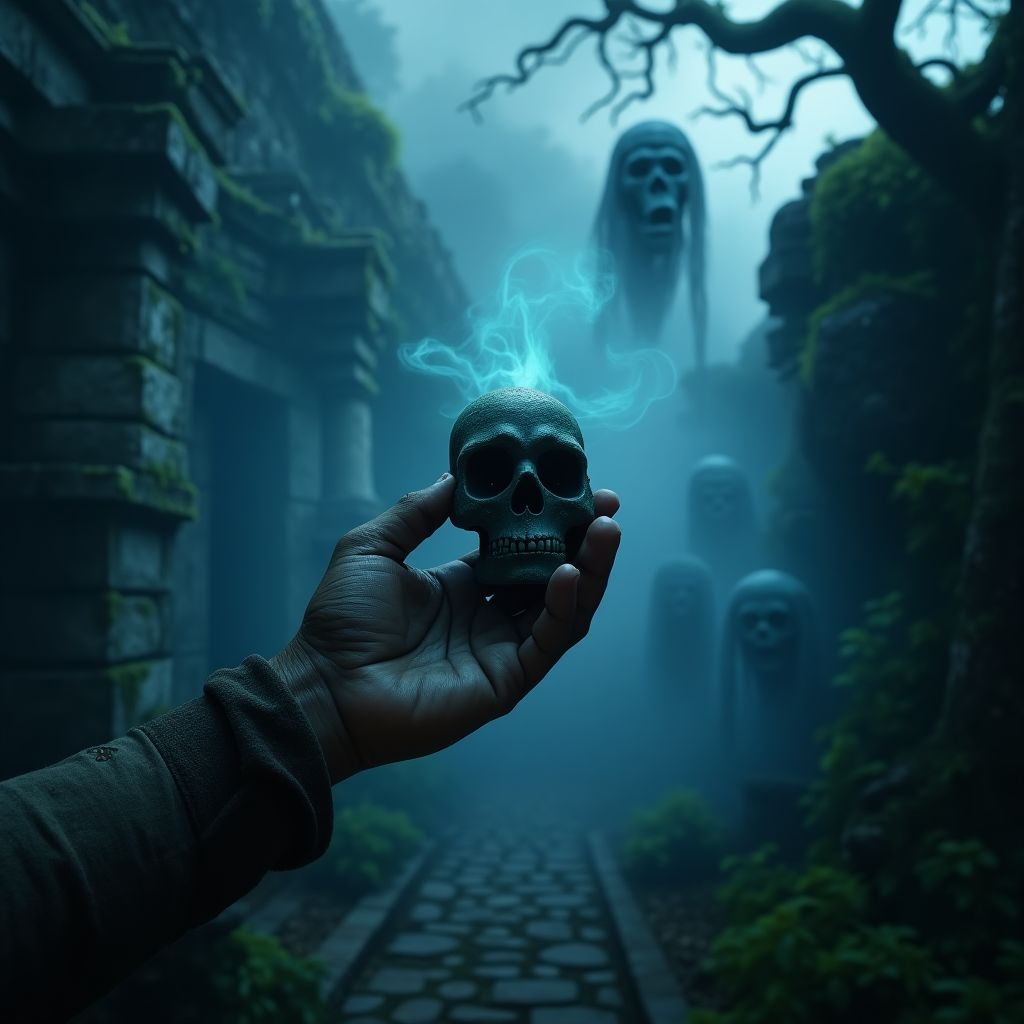In the chaotic orchestra of existence, where silence is a rare commodity and noise reigns supreme, there lurks a mysterious sound that is both ancient and terrifying—a sound that beckons with the spine-chilling allure of screams echoing from the depths of time. This is the sound of the Ancient Aztec Death Whistle, a cacophony so bone-rattling that it is often described as the "scream of a thousand corpses" intertwined with the eerie cadence of a ghostly gale.
The world is no stranger to peculiar sounds, from the hum of a bustling city to the serene crackle of a campfire. Yet, nothing quite compares to the otherworldly howl of this small, innocuous-looking device that was engineered not by modern technology but by the brilliant—or perhaps nefarious—minds of the Aztec civilization. A civilization renowned not only for its architectural prowess and agricultural innovation but also for its deep-rooted connection to the ethereal and the Mictlan—the underworld.
Descendants of this mighty civilization remain tethered to its enigmatic legacy, and their ancient secrets continue to seep into today’s world, awakening primal fears and tickling the fancy of thrill-seekers and history buffs alike. To truly appreciate the Aztec Death Whistle's haunting allure, one must recognize its historical roots, its cultural significance, and its ability to transcend the constraints of time, leaving its icy mark in our modern psyche.
The Bone-Chilling Origins of the Aztec Death Whistle
Let us embark on a journey to the heart of Aztec civilization, where sacrificial traditions thrived in a world suspended between the divine and the infernal. Whistles made of clay and shaped to resemble human skulls or spiritually laden symbols were used for a myriad of purposes, ranging from spiritual ceremonies to ferocious acts of war.
As legend has it, these whistles were believed to summon spirits from the underworld, enveloping the enemy in a paralyzing fear, the kind that causes warriors to hesitate in a fatal moment of doubt. One can almost imagine the waves of terror that would ripple through opposing ranks as this harrowing sound filled the air, swallowing courage and spitting out despair.
The Science Behind the Screams
While legends delve into the mystical, science offers us a more tangible explanation. The Aztec Death Whistle's sonic architecture is as intriguing as its spectral whispers. This instrument is designed to mimic human screams with uncanny accuracy, its frequency pummeling the airwaves with a force that seems disproportionate to its size. It operates using a cavity-resonance technique, compressing a jet of air in such a way that it produces a piercing shriek—a ghastly cry that has been said to freeze the blood of its listeners.
Modern Resurgence of the Screaming Specter
Like a poltergeist resurrected from shadowy depths, the Aztec Death Whistle has an uncanny knack for reinventing itself, capturing the imaginations and fears of our modern world. It's been featured on platforms such as YouTube, its scream echoing across the digital landscape and into communities that thrive on both historical intrigue and spine-tingling thrills.
Today, these whistles have found a niche market. They're sold online, cautiously delivered to the daring souls eager to shroud their surroundings in an ominous symphony. They have animations, documentaries, and even horror movie soundtracks clamoring to replicate their spectral essence, ensuring they remain an indelible footprint on the fabric of pop culture.
Cultural Reverberations: Why We Are Terrified, Yet Fascinated
So, why does this seemingly innocuous object wield such delectable terror? Perhaps it is because the sound is not just noise—it is an enigma, a relic seeped in mystery and ritual. It's a reminder of our mortality wrapped in clay, rooting us back to our most primal instincts. It compels us to stand on edge as we straddle the boundaries between the living and the dead.
In an age where science often extinguishes magic with pages of empirical data, the Aztec Death Whistle whispers things unseen and unproven. It’s a symphony of fear and curiosity, allure and avoidance, pulling us into its depths even as we yearn to pull away.
The Bigger Picture: What Time Travel in Sound Can Teach Us
In contemplating the Aztec Death Whistle, we straddle the line between ancient folklore and modern reality. It's not just about understanding a sound but embracing a cultural legacy that has left an indelible mark. In an ever-evolving world, this whistle reminds us how something as simple as sound can bridge centuries, speaking languages far removed from that which we know, yet resonating in crescendos that spark a primal recognition within us.
Such bridges are what transform anthropology from a study of relics to a study of resonance—a notion rippling across temporal barriers, echoing truths about human nature and the universal allure of the unknown. They invite us to tread cautiously upon the past, listening intently to the messages coded within their spectral cries, whispers that awaken our innate sense of adventure and peril, evoking freedom from the mundane, control over the unknown, and success in uncovering ancient secrets.
A Call to Action: Embrace the Gamut of Human Experience
So, dear readers, what do you think? Are you ready to delve into the haunting symphony of the Aztec Death Whistle? Would you dare embrace its spectral call and allow a sound to transport you beyond the realm of the living, if only for a brief moment? As you ponder these questions, I invite you to be part of our vibrant community by joining our ranks at the "Shining City on the Web". Debate, discuss, like, and share this glimpse into the unfathomable past and become both spectators and participants in the exploration of human sound and spirit.
Disclaimer: This article may contain affiliate links. If you click on these links and make a purchase, we may receive a commission at no additional cost to you. Our recommendations and reviews are always independent and objective, aiming to provide you with the best information and resources.
Get Exclusive Stories, Photos, Art & Offers - Subscribe Today!
























Post Comment
You must be logged in to post a comment.